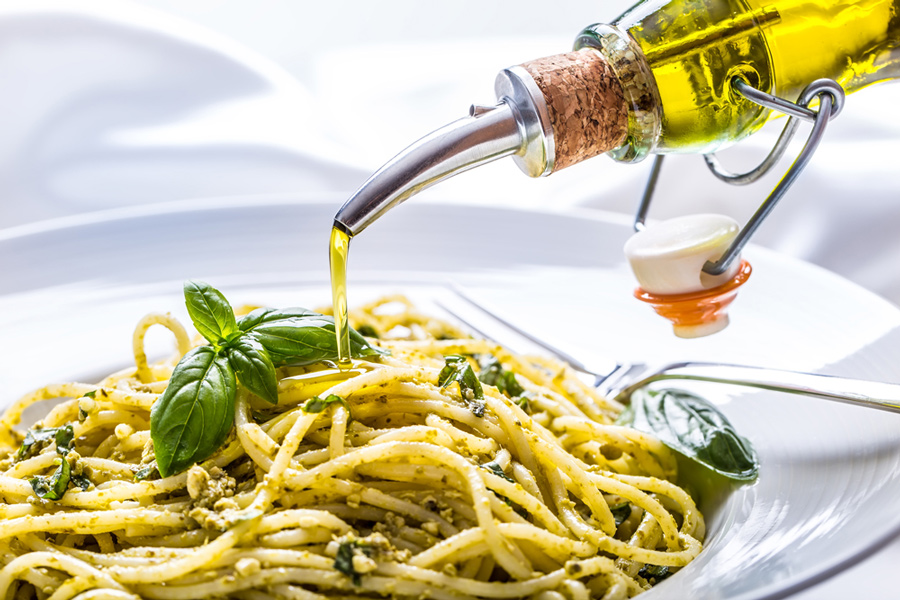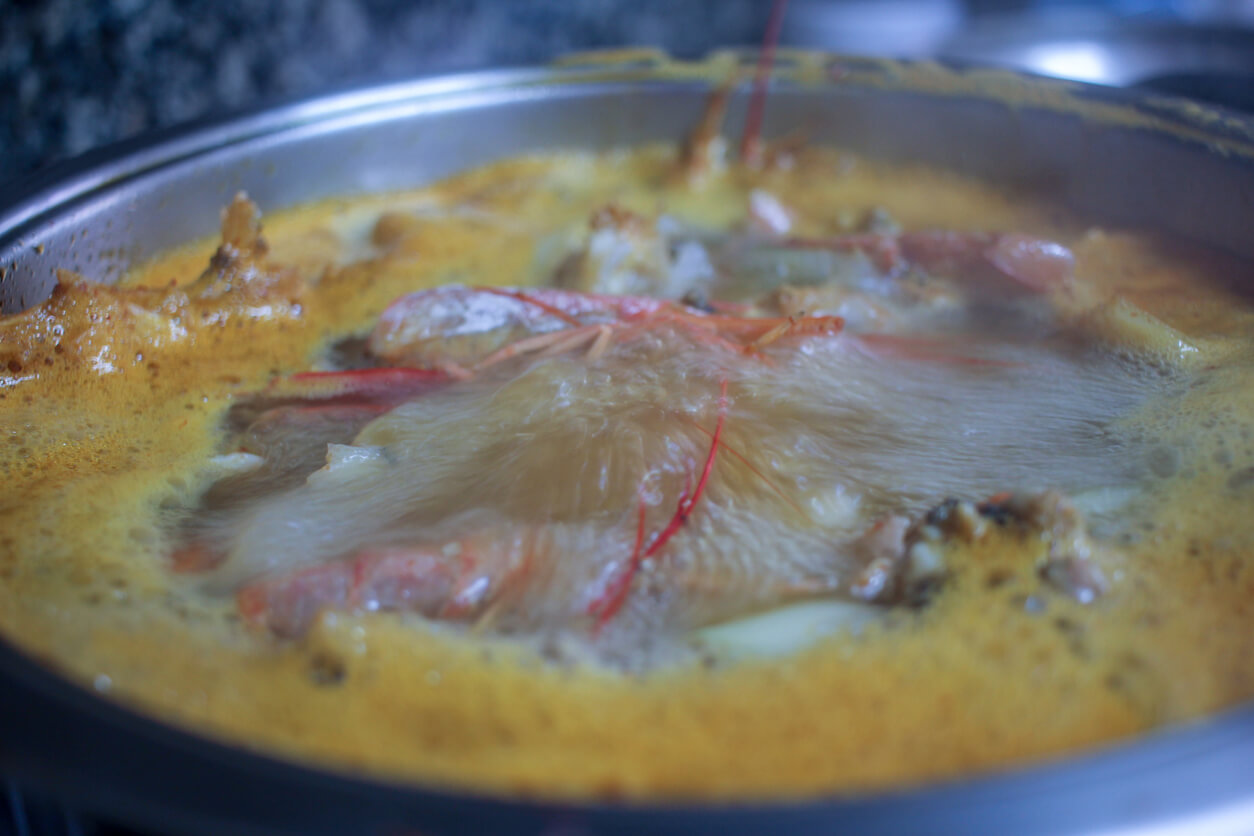Homemade gifts such as infused cooking oils are a part of family traditions around the world. Whether you are making infused oils for personal use or as a gift for friends and family, infused oils are visually appealing, enhance flavors in your cooking, and make thoughtful homemade gifts. However, if not done properly, they may cause serious illness and potential death.
Using garlic and herbs to infuse oils brings extra complexity to the food safety world. Oils provide an anaerobic environment, and when combined with low-acid food matrices such as garlic and herbs, this provides the perfect conditions for specific bacteria to thrive. Clostridium botulinum specifically is of concern in infused oils. Spores of C. botulinum may already be present in garlic and herbs, and when introduced to an ideal environment—no oxygen, low acid content, and ambient temperatures—they can germinate, multiply, and produce a deadly neurotoxin.
To avoid food safety trouble, follow these helpful tips to infuse oils safely.
For any of the methods below, always start by sterilizing your containers. Thoroughly wash your glass containers and boil them for 10 min to ensure the destruction of bacteria, yeasts, and molds. Select quality ingredients, wash them thoroughly, and pat them dry.
Infused Oils
There are two ways to infuse oils: by using nonacidified garlic/herbs or by acidifying fresh garlic/herbs.
Nonacidified Dried or Fresh Garlic and Herbs
In this method, the oil is heated to 180 °F before adding dried or fresh garlic and herbs. Since acidification is not used to prevent bacteria from growing, infused oils made with this method must be kept in the refrigerator and discarded 4 days after being made. Alternatively, you could freeze the oil until you are ready to use it.
Note: Using dried garlic and herbs, which have little available water (lower water activity), still does not ensure that your ingredients are dried enough to provide a safe product. Water activity is measured in a laboratory with specialized equipment. Even small pockets of moisture could provide enough water for bacteria to survive and grow.
Acidified Fresh Garlic and Herbs
In this method, garlic and herbs are acidified with an acid that is strong enough to prevent C. botulinum from growing.
Researchers from the University of Idaho (see “References” section) developed a safe method to acidify garlic, basil, oregano, or rosemary to a pH of 4.2 or less within 24 hr. This method, if followed properly, allows you to store your infused oils at room temperature.
How to Acidify Your Ingredients
Garlic Acidification Steps
- Mix 1 tablespoon of citric acid into 2 cups of water.
Important food safety note: Do not replace the citric acid solution with vinegar or lemon juice, as they have not been tested and may result in an unsafe final product.
- Coarsely chop peeled garlic cloves into 1/4-in. (or slightly smaller) pieces. You need 2/3 cup of chopped garlic.
Important food safety note: These measurements give you a ratio of 1 part garlic to 3 parts citric acid solution, which is critical! Changing the ratio may result in an unsafe product.
- Add the garlic to the citric acid solution, weighing it down so that it remains fully submerged. An easy way to weigh down the garlic is to make an additional batch of the citric acid solution and pour it into a sealable zipper-top bag. Place the bag on top of the garlic. The weighted bag will take the shape of your container while also keeping the garlic submerged. Alternatively, you also can use a bowl as a weight and place it on top of the garlic.
- Allow the garlic to sit submerged for 24 hr at room temperature. After 24 hr, drain the solution.
- Follow the directions in the “Infuse the Oil” section.
Fresh Herb (basil, oregano, or rosemary) Acidification Steps
- Mix 1 tablespoon of citric acid into 2 cups of water.
Important food safety note: Do not replace the citric acid solution with vinegar or lemon juice, as they have not been tested and may result in an unsafe final product.
- Wash and pat dry your fresh herbs, keeping the leaves attached to the stems. You need 1.5 cups (or 1.7 oz) of basil, rosemary, or oregano.
Important food safety note: These measurements give you a ratio of 1 part herbs to 10 parts citric acid solution, which is critical! Changing the ratio may result in an unsafe product.
- Add the herbs to the citric acid solution, weighing them down so that they remain fully submerged. An easy way to weigh down the herbs is to make an additional batch of the citric acid solution and pour it into a sealable zipper-top bag. Place the bag on top of the herbs. The weighted bag will take the shape of your container while also keeping the herbs submerged. Alternatively, you also can use a bowl as a weight and place it on top of the herbs.
- Allow the herbs to sit submerged for 24 hr at room temperature. After 24 hr, drain the solution and gently pat-dry the herbs.
- Follow the directions in the “Infuse the Oil” section.
Infuse the Oil
- Add 1 part acidified garlic or herbs to 10 parts of room-temperature oil. This ratio may be increased or decreased based on your personal taste preferences.
- Infuse the oil for 1–10 days. The longer you let it infuse, the more intense the flavor of the oil will be. You can check the flavor regularly by inserting a clean utensil into the oil and tasting it until it has reached the intensity you desire.
Important food safety note: Only allow clean utensils to touch your oil! If the utensil isn’t clean, it can contaminate the oil.
- Or, to infuse more quickly, heat the oil to 140 °F for 5 min. Add 1 part acidified garlic or herbs to 10 parts of heated oil.
- Once the oil reaches the desired flavor, remove the acidified garlic or herbs—otherwise, the flavor will continue to intensify.
Storage
For best quality and flavor, store infused oils in dark-colored bottles and avoid heat exposure, as oils oxidize and turn rancid quicker when exposed to light and heat.
For long-term storage, refrigerate or freeze oils.
References
Abo, B., Bevan, J., Greenway, S., Healy, B., McCurdy, S. M., Peutz, J., & Wittman, G. (2014). Acidification of garlic and herbs for consumer preparation of infused oils. Food Protection Trends, 34(4), 247–257. https://www.foodprotection.org/files/food-protection-trends/Jul-Aug-14-Abo.pdf








